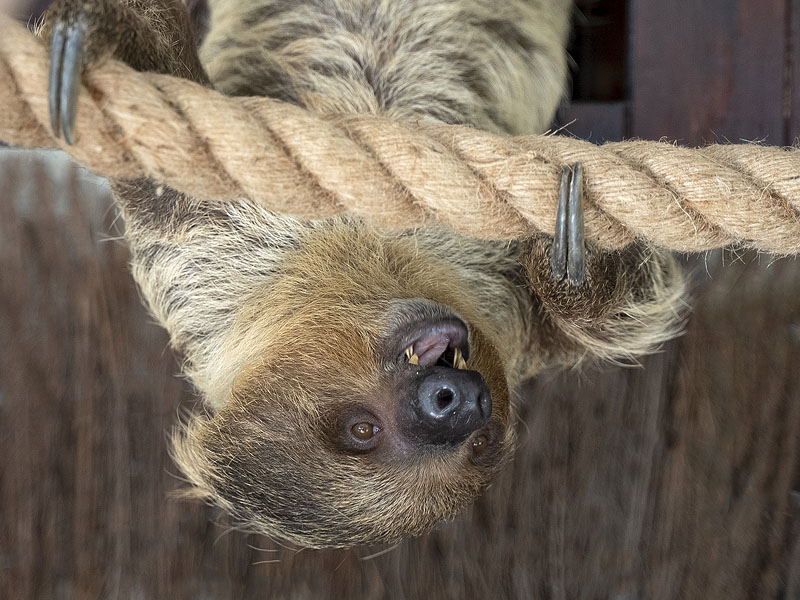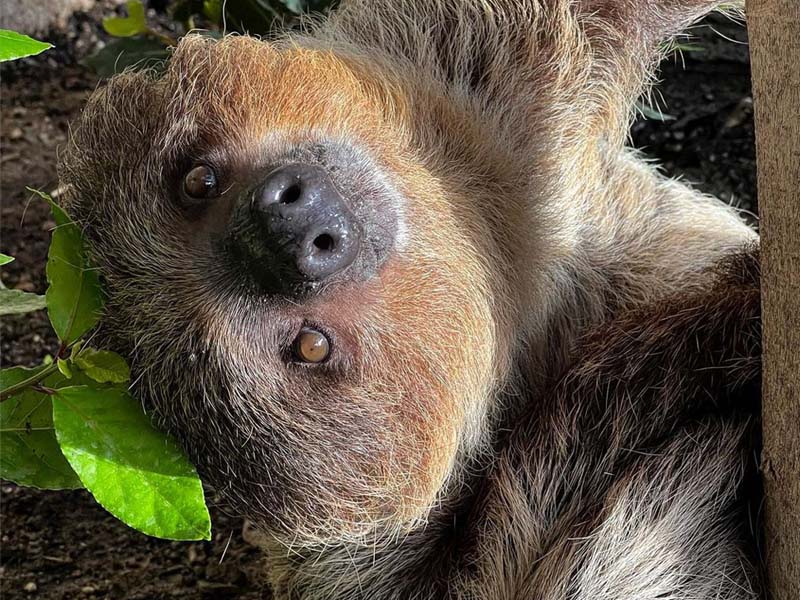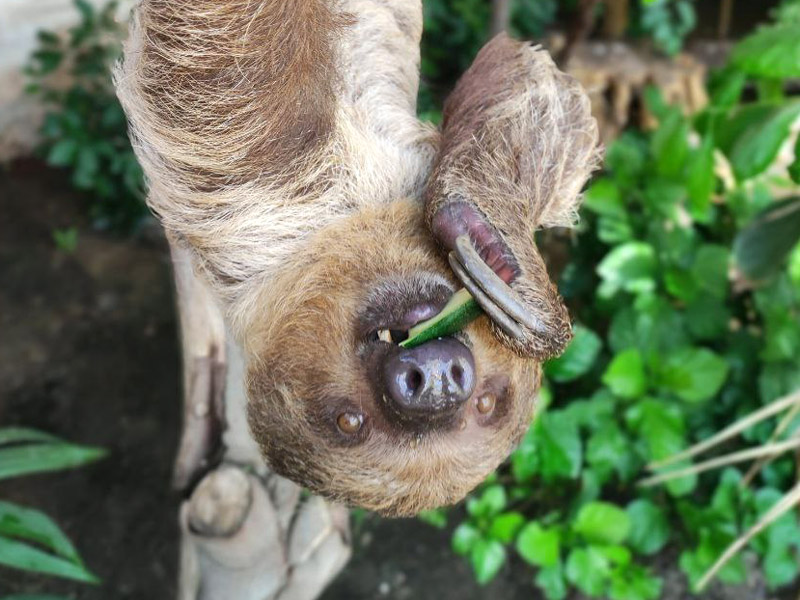We celebrate sloth day for the first time

- We join this day by raising awareness about the need to protect this newcomer species at Selwo Marina
The arrival of endangered species is always subject to the needs of the relevant European Endangered Species Program (EEP), and the recent expansion of our zoological collection this past summer brought with it the welcoming of a beautiful specimen of the two-toed sloth (Choloepus hoffmanni, named after the German naturalist Karl Hoffmann), a mammal native to Central and South America that came to inhabit the territory of La Hondonada. It is one of the slowest animals in existence, according to National Geographic.
Since 2010, the third Saturday of October is celebrated, thanks to the impulse of the AIUNAU Foundation in Medellin (Colombia), the International Sloth Day.
So, this Saturday 15 October, we are joining the day with the aim of raising public awareness of the need to protect this animal as the sloth is subject to the dangers of illegal sale to turn them into pets, and suffers the consequences of climate change.

According to the United Nations Environment Programme (UNEP), there are six species of sloths, all of them vulnerable or threatened; although depending on the species, the conservation status is different, with declining populations such as the ruffed sloth or pygmy sloth, reports the International Union for Conservation of Nature (IUCN).
It is an arboreal mammal that feeds on leaves, although it can also eat branches or shoots. As its diet is low in calories, its metabolism is very slow, as are its movements. Its morphology is very curious, with an extremely thick protective skin, as is the way it moves slowly through the forest habitat, the destruction of which could have caused a notable reduction in its population.

How has Bob adapted to his new home?
Our young male, Bob 'Junior', received his name by a vote of our visitors, taking the same name as his father, resident at Faunia and who, like our new inhabitant, is part of the conservation programme for this species. As always, the incorporation of the two-toed sloth has the approval and collaboration of organisations such as EAZA (European Association of Zoos and Aquaria) and AIZA (Iberian Association of Zoos and Aquariums), of which Selwo Marina and Selwo Aventura form part.
Craig Allum, head of Conservation at Selwo Marina, highlights the sloth's excellent adaptation to its new home: "it moves slowly, grasping branches with its long nails, two toes on its front legs, hence its name".
At Selwo Marina, "he gets on very well with the marmosets, tortoises and toucans with which he shares space. Of course, when he was a newcomer, there were monkeys that tried to approach him with the intention of taking his food... but far from being intimidated, he responded by snorting at them, he's quite something," says Allum. However, "the monkeys have now learned that it's better not to try to steal the sloth's food!", concludes our conservation officer, amused.

